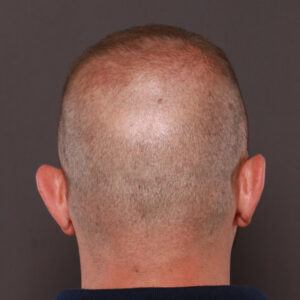Hair transplant techniques have advanced over time and the two most prominent are Follicular Unit Extraction (FUE) and Follicular Unit Transplantation (FUT) or "strip method". These methods represent innovative approaches to restoring hair loss, each with its unique set of advantages and considerations. Understanding the distinctions between FUE and FUT is crucial for individuals seeking effective and personalized solutions for hair restoration.


Advantages of FUE
- Minimally Invasive: FUE is a minimally invasive procedure that involves extracting individual hair follicles without the need for a linear incision. This results in smaller, less noticeable scars.
- No Linear Scar: This method allows patients to wear shorter hair styles without the concern of a visible scar, making the procedure more discreet and appealing.
- Reduced Healing Time: FUE typically involves a faster healing time compared to FUT.
- Versatility In Donor Sites: Flexibility in choosing donor sites.
- Precision & Natural-looking Results: The FUE method enables the extraction of individual units, preserving natural orientation and distribution of hair.
- Suitable For Small Scale Procedures:
FUE is suitable for small scale hair transplants, making it an ideal option for patients requiring a limited number of grafts or focusing on specific areas. - Less Disruption to Blood Supply: FUE minimizes disruption to blood supply in the donor area, reducing the risk of complications and promoting better healing.
What FUE Hair Transplant Surgery Day Looks Like
Advantages of FUT
- High Graft Yield: FUT allows for the extraction of a large number of grafts in a single session. This can be advantageous for individuals with extensive hair loss or those looking for significant coverage in one procedure.
- Natural-Looking Results: FUT transplants individual follicular units, which contain one to four hairs each. This mimics the natural hair growth pattern, resulting in a more aesthetically pleasing and realistic outcome.
- Cost-Effective: In some cases, FUT can be more cost-effective than other hair restoration methods, especially when a large number of grafts are needed.
- Shorter Procedure Time: FUT procedures are generally quicker than some other hair transplant methods, such as Follicular Unit Extraction (FUE), because the grafts are harvested in a single strip and then dissected.
- Minimal Transaction Rate: The strip harvesting method of FUT usually involves less transaction (damage to hair follicles) compared to some methods of FUE. Minimizing transaction helps ensure the survival and growth of transplanted hair follicles.
- Donor Area Preservation: FUT leaves a linear scar at the donor site which tends to heal very nicely and surrounding hair can cover it. Also, remaining donor area can still be used for future procedures if needed.
- Effective for Large Areas: FUT is often recommended for patients with larger areas of baldness or for those who require a higher number of grafts. The ability to harvest a larger number of grafts in a single session makes it suitable for extensive hair restoration.
Schedule A Hair Restoration Consultation To Discuss Your Options
A consultation is an essential step to gather personalized information about your situation and make an informed decision about the best approach for your needs. Visit one of our specialized hair restoration specialists to determine the best course of action for you. Call 801.849.8140 to learn more.